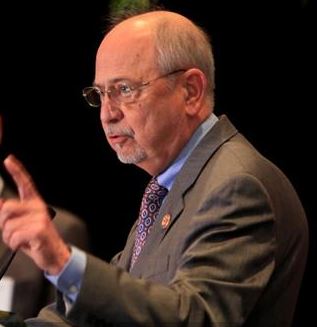(UPDATED at 12:52 p.m. MDT June 30, 2016)
Today the BIA released a “24 Hour Report” about the fire shelter deployment on the Cedar Fire. It provided a few facts that were not previously disclosed by the agency.
The six firefighters deployed their shelters in an area that had already burned, and they were evaluated in the hospital for “smoke inhalation”.
The Serious Accident Investigation Team will be led by Jon Rollins, Chief Investigator for the National Park Service.
****
(Originally published at 9:52 p.m. MDT, June 29, 2016)
The Bureau of Indian Affairs provided more information today about the six firefighters on the Cedar Fire south of Show Low, Arizona who on June 28 found themselves in a situation where they had to deploy fire shelters. The firefighters, all from the Navajo Interagency Hotshot Crew, walked away from the site and were transported to Summit Healthcare in Show Low where they were treated and released that evening.
A Serious Accident Investigation Team has been formed and will investigate the circumstances surrounding the deployment.
We don’t know why or how the incident occurred, but if recent history holds true, we may never know, thanks to the unintended consequences of Senator Maria Cantwell’s and Representative Doc Hastings’ hastily conceived Public Law 107-203 signed into law in 2002.
But putting aside the unknown details of fire behavior, decisions made on the fireline, and the strategy and tactics being used on the Cedar Fire yesterday, there a few things that we do know.
- The Type 1 Incident Management Team issued an update titled “Final Cedar Fire Update” on Monday, June 27. It said in part, “While 554 firefighters are working on the fire [Monday] morning, only the Team itself will remain by Tuesday afternoon. The Bureau of Indian Affairs (BIA) will assume command of the fire at 6 A.M. Tuesday.” That Monday update said the fire received rainfall on Sunday and more rain was expected on Monday.
- The Type 1 Team turned the fire over to the Fort Apache Agency at 6 a.m. on Tuesday, June 28. There was no mention of a Type 2 or Type 3 Incident Management Team.
- The Fort Apache Agency posted a fire update on Facebook at 1:05 p.m. on Tuesday, June 28 saying the resources on the fire that day were, “Navajo Hotshots, 3 Type 6 Engines, Fort Apache Fuels Type 2 IA Crew.” And, “Fire Personnel will continue to hold and mop up the fire.” These two crews and three engines probably amounted to a maximum of 50 people, plus miscellaneous overhead. This was down from 554 the previous day, a 91 percent reduction in personnel overnight.
- Candy Lupe, a Public Information Officer with the Bureau of Indian Affairs’ Fort Apache Agency, told Wildfire Today that she was not sure exactly when the incident occurred but estimated it happened around 3 p.m. Arizona time on Tuesday, June 28.
- The infrared scan of the fire conducted very early Monday morning, June 27, showed “scattered” and “isolated” heat over much of the fire. There was no record of an infrared scan prior to the day shift on Tuesday June 28, but they had been completed every day from June 17 through June 27.
We’re not pointing fingers or attempting to lay blame on anyone. Hopefully the investigation will bring to light some lessons that can be learned.
 The incident brings to mind the Common Denominators of Fatal and Near-Fatal Fires, developed by Carl Wilson in 1976. Mr. Wilson put two lists together, a four-item list based on his studies of 61 fatal fires, and a five-item list that included an additional 31 near-fatal fires. More information about these lists is in our February 1, 2016 article, Are there 4 or 5 common denominators of fire behavior on fatal fires? Almost all recent wildland fire publications, if they publish the list, only have the four-item list.
The incident brings to mind the Common Denominators of Fatal and Near-Fatal Fires, developed by Carl Wilson in 1976. Mr. Wilson put two lists together, a four-item list based on his studies of 61 fatal fires, and a five-item list that included an additional 31 near-fatal fires. More information about these lists is in our February 1, 2016 article, Are there 4 or 5 common denominators of fire behavior on fatal fires? Almost all recent wildland fire publications, if they publish the list, only have the four-item list.
These lists are not intended as a quick and easy checklist for investigators, nor are they rules or guidelines that must be followed. They are simply interesting commonalities seen on many fatal and near-fatal fires. Things to think about, not rules that must be adhered to.
Here is the five-item list that includes data from fatal and near-fatal fires:
- Most of the incidents occurred on relatively small fires or isolated sectors of larger fires.
- Most of the fires were innocent in appearance prior to the “flare-ups” or “blow-ups”. In some cases, the fatalities occurred in the mop-up stage.
- Flare-ups occurred in deceptively light fuels.
- Fires ran uphill in chimneys, gullies, or on steep slopes.
- Suppression tools, such as helicopters or air tankers, can adversely modify fire behavior. (Helicopter and air tanker vortices have been known to cause flare-ups.)”





